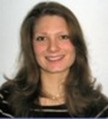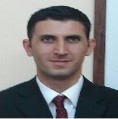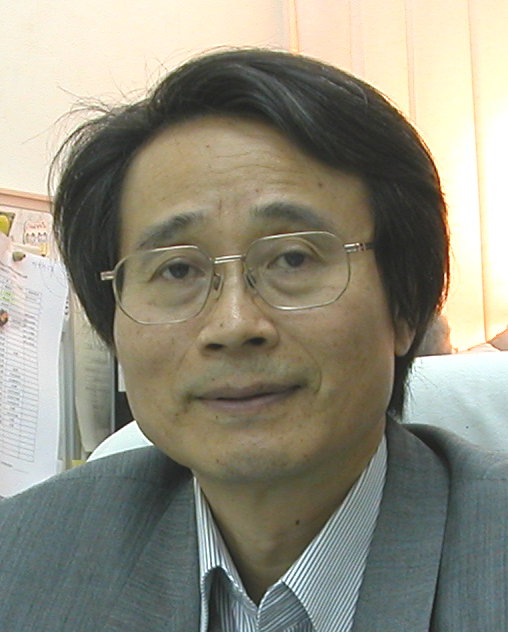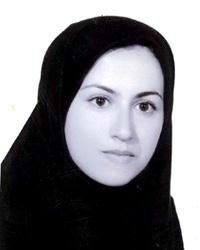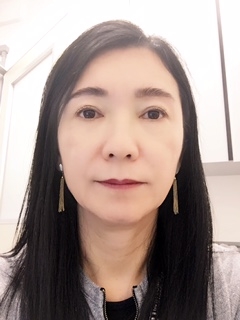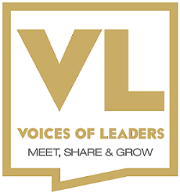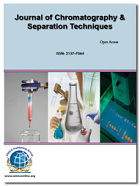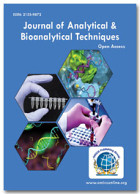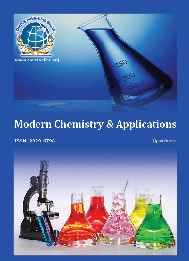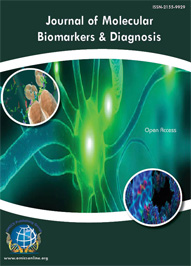Theme: Exhorting and Promulgating the Widespread Applications of Chromatography and Advancements in HPLC
Chromatography-HPLC Congress 2017
Track 1:- Major Chromatographic Techniques
Chromatography basically is a method of separation of compounds from a mixture. The technique is both analytical and preparative and is employed widely in industries as well as in laboratories. Chemical analysis is mostly done all over the world with chromatography or any other various techniques related to chromatography. Chromatography is a physical technique and has a vast application in chemical field starting from basic organic chemistry to forensic science. Some major chromatography techniques are:
Column chromatography is a method used to purify individual chemical compounds from mixtures of compounds. It is has preparative applications on scales ranging from small scale to large scale production. Relatively low cost and disposability of the stationary phase are the main advantages of column chromatography.
Paper chromatography involves placing a small dot or line of sample solution onto a strip of polar cellulose chromatography paper. The paper is placed in a glass chamber with a shallow layer of solvent and is sealed. As the solvent moves through the paper, it comes in contact with the sample mixture, which starts to rise up the paper with the solvent.
Thin layer chromatography (TLC) is a mostly used technique which involves a stationary phase of a thin layer of adsorbent like alumina, silica gel, or cellulose on a flat, inert layer of substrate. Advantages of TLC are better separations, faster runs, and the choice of different adsorbents. Better quantification and resolution can be achieved with high-performance TLC.
Displacement chromatography is a preparative technique in which a sample is placed onto the head of the column and is then displaced by a solute that is more strongly adsorbed than the components of the original mixture. As a result the components are resolved into consecutive rectangular zones of highly concentrated pure substances rather than solvent-separated peaks.
Gas chromatography (GC) is commonly used in analytical chemistry for separating and analysing compounds that can be vaporized without decomposition. In this process, the mobile phase (or "moving phase") is a carrier gas; commonly an inert gas such as helium or an unreactive gas such as nitrogen is generally used. Stationary phase is a microscopic layer of liquid or polymer on an inert solid support, within a glass or metal tubing.
Supercritical fluid chromatography (SFC) –in this technique the mobile phase is a fluid above and relatively close to its critical temperature and pressure. SFC mainly utilizes carbon dioxide as the mobile phase; in order to pressurize the chromatographic flow. Supercritical phase represents a state in which liquid and gas properties combine.
Expanded Bed Adsorption (EBA) Chromatographic Separation is used for target protein from a raw feed stream when it passes through a chromatography column system containing adsorbent beads. Using this technique the unprocessed raw compound can be treated directly in the chromatographic column, avoiding clarification and pre-treatment steps.
Related: Chemistry conferences | Chromatography Conferences | HPLC Conference 2017
World Congress on Plasma Chemistry, November 13-14, 2017 Lisbon, Portugal; 2nd European Organic Chemistry Congress, March 2-3, 2017 Amsterdam, Netherlands; 9th World congress on Chemistry, November 13-15, 2017 Lisbon Portugal; Annual Meeting on Forensic Chemistry, May 1-3, 2017 Barcelona, Spain; 3rd World Chemistry Conference, May 22-24, 2017 Las Vegas, USA; 4th European Chemistry Congress, May 11-13,2017 Barcelona, Spain; 3rd international Conference on Organic & Inorganic Chemistry, July 24-26, 2017 Chicago, USA; 2nd International Conference on Applied Chemistry, October 16-17, 2017 Paris, France; Annual Pharmaceutical Science & Medicinal Chemistry Congress, October 26-28, 2017 Osaka, Japan; 4th World Congress on Mass Spectrometry, June 19-21, 2017 London, UK; 4th World Congress on Chromatography, August 07-09, 2017 Rome Italy.
Related Societies:
Royal Society of Chemistry, UK; Chromatographic Society (ChromSoc), UK; International Society for Olfaction and Chemical Sensing, UK; International Society for Neurochemistry, Switzerland; International Association of Environmental Analytical Chemistry, Germany; Association for Clinical Biochemistry, UK; Biochemical Society, UK; International Society of Chemical Ecology, USA; The American Association for Clinical Chemistry, USA; The Association of Analytical Chemistry, USA; American Society for Biochemistry and Molecular Biology, USA; American Chemical Society, USA; Society of Environmental Toxicology and Chemistry, USA; Analytical Biosciences group, USA; The Electrophoresis Society, USA German Chemical Society, Germany; Danish Chemical Society, Denmark.
Track 2:- HPLC separation techniques
High Performance Liquid Chromatography (HPLC) is a non-destructive procedure for resolving a complex mixture into its individual fractions or compounds. It is based on differential migration of solutes with the solvents. The solutes in a mobile phase go through a stationary phase. Those solutes with a high affinity for the mobile phase will spend more time in this phase than the solutes that prefer the stationary phase. As the solute rise up through the stationary phase they separate. The process is called chromatographic development. The fraction with greater affinity to stationary layer travels slower and shorter distance while that with less affinity travels faster and longer.
In normal-phase chromatography, the stationary phase is polar and the mobile phase is nonpolar. In reversed phase the stationary phase is nonpolar and the mobile phase is polar.
Flash Column Chromatography (FCC) or Flash Chromatography is a quickest and the easiest way to separate complex mixtures of compounds. It uses compressed air to push the solvent through the column. This provides better separation and reduces the amount of time required to run a column.
Ion exchange chromatography (IEC) uses an ion exchange mechanism to separate analytes based charge difference. It is performed in columns but can also be useful in planar mode. It uses a charged stationary phase to separate compounds including cations, anions, amino acids, proteins, lipids and peptides. Loading samples in buffers of low ionic strength makes ion exchange chromatography an excellent purification step after HIC.
Affinity chromatography is based on selective non-covalent interaction between an analyte and sample molecules. It is highly specific, but not robust method. It is used in biochemistry in the purification of proteins bound to tags. Fusion proteins are labelled with compounds such as antigens or biotin which bind to the stationary phase specifically. Later after purification, some of these tags are removed and the pure protein is obtained.
Immobilized Metal Affinity Chromatography is used to separate molecules based on the relative affinity for the metal. Often these columns can be loaded with different metals to create a column with a targeted affinity.
Chiral chromatography includes the separation of stereoisomers. Enantiomers have no chemical or physical differences apart from being three-dimensional mirror images. For chiral separations to happen, either the mobile phase or the stationary phase must themselves be made chiral by inducing different affinities between the analytes.
Size-exclusion chromatography (SEC) also known as gel filtration chromatography, separates molecules according to the size or more accurately according to the hydrodynamic diameter or the hydrodynamic volume. Small molecules enter the pores of the media where they are trapped and removed from the flow of the mobile phase. Mean residence time in the pores depends upon the effective size of the analyte molecules. It is a low-resolution chromatography technique and thus it is used for determining the tertiary structure and quaternary structure of purified proteins.
Related: Chemistry conferences | Chromatography Conferences | HPLC Conference 2017
World Congress on Plasma Chemistry, November 13-14, 2017 Lisbon, Portugal; 2nd European Organic Chemistry Congress, March 2-3, 2017 Amsterdam, Netherlands; 9th World congress on Chemistry, November 13-15, 2017 Lisbon Portugal; Annual Meeting on Forensic Chemistry, May 1-3, 2017 Barcelona, Spain; 3rd World Chemistry Conference, May 22-24, 2017 Las Vegas, USA; 4th European Chemistry Congress, May 11-13,2017 Barcelona, Spain; 3rd international Conference on Organic & Inorganic Chemistry, July 24-26, 2017 Chicago, USA; 2nd International Conference on Applied Chemistry, October 16-17, 2017 Paris, France; Annual Pharmaceutical Science & Medicinal Chemistry Congress, October 26-28, 2017 Osaka, Japan; 4th World Congress on Mass Spectrometry, June 19-21, 2017 London, UK; 4th World Congress on Chromatography, August 07-09, 2017 Rome Italy.
Related Societies:
Royal Society of Chemistry, UK; Chromatographic Society (ChromSoc), UK; International Society for Olfaction and Chemical Sensing, UK; International Society for Neurochemistry, Switzerland; International Association of Environmental Analytical Chemistry, Germany; Association for Clinical Biochemistry, UK; Biochemical Society, UK; International Society of Chemical Ecology, USA; The American Association for Clinical Chemistry, USA; The Association of Analytical Chemistry, USA; American Society for Biochemistry and Molecular Biology, USA; American Chemical Society, USA; Society of Environmental Toxicology and Chemistry, USA; Analytical Biosciences group, USA; The Electrophoresis Society, USA German Chemical Society, Germany; Danish Chemical Society, Denmark.
Track 3:- Advances in HPLC instrumentations
HPLC is a popular method of analysis for natural products because of its high accuracy, precision and is not differed by the stability or the volatility of the compounds. HPLC combined with diode array detector (HPLC-DAD), mass spectrometer (HPLC-MS) have been successfully utilized for the qualitative and quantitative determination of various types of phytoconstituents like alkaloids, glycosides, tannins, tri-terpenes, flavonoids etc. HPLC methods are used readily for the determination of drug in biological fluids and pharmaceutical dosage forms. HPLC determination with spectroscopic detection is useful for routine quality control of drugs in pharmaceutical dosage forms and stability studies.
A chromatographic detector is capable of establishing both the identity and concentration of eluting components in the mobile phase stream. A broad range of detectors are available to meet different sample requirements. Detectors respond to a particular compound only and the response is independent of mobile phase composition and the response of bulk property detectors is dependent on collective changes in composition of sample and mobile phase. Specific detectors are UV-VIS, Photo diode array, fluorescence, and mass spectroscopic detectors. Bulk Property detectors include refractive index, electrochemical and light scattering detectors.
Related: Chemistry conferences | Chromatography Conferences | HPLC Conference 2017
World Congress on Plasma Chemistry, November 13-14, 2017 Lisbon, Portugal; 2nd European Organic Chemistry Congress, March 2-3, 2017 Amsterdam, Netherlands; 9th World congress on Chemistry, November 13-15, 2017 Lisbon Portugal; Annual Meeting on Forensic Chemistry, May 1-3, 2017 Barcelona, Spain; 3rd World Chemistry Conference, May 22-24, 2017 Las Vegas, USA; 4th European Chemistry Congress, May 11-13,2017 Barcelona, Spain; 3rd international Conference on Organic & Inorganic Chemistry, July 24-26, 2017 Chicago, USA; 2nd International Conference on Applied Chemistry, October 16-17, 2017 Paris, France; Annual Pharmaceutical Science & Medicinal Chemistry Congress, October 26-28, 2017 Osaka, Japan; 4th World Congress on Mass Spectrometry, June 19-21, 2017 London, UK; 4th World Congress on Chromatography, August 07-09, 2017 Rome Italy.
Related Societies:
Royal Society of Chemistry, UK; Chromatographic Society (ChromSoc), UK; International Society for Olfaction and Chemical Sensing, UK; International Society for Neurochemistry, Switzerland; International Association of Environmental Analytical Chemistry, Germany; Association for Clinical Biochemistry, UK; Biochemical Society, UK; International Society of Chemical Ecology, USA; The American Association for Clinical Chemistry, USA; The Association of Analytical Chemistry, USA; American Society for Biochemistry and Molecular Biology, USA; American Chemical Society, USA; Society of Environmental Toxicology and Chemistry, USA; Analytical Biosciences group, USA; The Electrophoresis Society, USA German Chemical Society, Germany; Danish Chemical Society, Denmark.
Track 4:- Hyphenated HPLC methods
The hyphenated technique is developed from the coupling of a separation technique and an on-line spectroscopic detection technology. Several remarkable improvements in hyphenated analytical methods over the last two decades have significantly broadened their applications in the analysis of biomaterials, especially natural products, pre-isolation analyses of crude extracts or fraction from various natural sources, isolation and detection of natural products, chemical fingerprinting, testing of herbal products, de-replication of natural products, and metabolomics. Rapid identification and characterization of known and new natural products directly from plant and marine sources without the necessity of isolation and purification can be achieved by various modern hyphenated techniques. Techniques like HPLC coupled to NMR (Nuclear Magnetic Resonance) or electrospray ionization tandem mass spectrometry (ESI-MS-MS) have been proven to be extremely powerful tools in natural product analysis, as they aid in the fast screening of crude natural product extracts or fractions for detailed information about metabolic profiles, with minimum quantity of material. Hyphenated HPLC techniques include HPLC-MS, HPLC-ESI-MS, HPLC-IC-MS, HPLC-NMR-MS, HPLC-DAD, HPLC-CE-MS, HPLC-UV, Coupling LC and MALDI-TOF.
Related: Chemistry conferences | Chromatography Conferences | HPLC Conference 2017
World Congress on Plasma Chemistry, November 13-14, 2017 Lisbon, Portugal; 2nd European Organic Chemistry Congress, March 2-3, 2017 Amsterdam, Netherlands; 9th World congress on Chemistry, November 13-15, 2017 Lisbon Portugal; Annual Meeting on Forensic Chemistry, May 1-3, 2017 Barcelona, Spain; 3rd World Chemistry Conference, May 22-24, 2017 Las Vegas, USA; 4th European Chemistry Congress, May 11-13,2017 Barcelona, Spain; 3rd international Conference on Organic & Inorganic Chemistry, July 24-26, 2017 Chicago, USA; 2nd International Conference on Applied Chemistry, October 16-17, 2017 Paris, France; Annual Pharmaceutical Science & Medicinal Chemistry Congress, October 26-28, 2017 Osaka, Japan; 4th World Congress on Mass Spectrometry, June 19-21, 2017 London, UK; 4th World Congress on Chromatography, August 07-09, 2017 Rome Italy.
Related Societies:
Royal Society of Chemistry, UK; Chromatographic Society (ChromSoc), UK; International Society for Olfaction and Chemical Sensing, UK; International Society for Neurochemistry, Switzerland; International Association of Environmental Analytical Chemistry, Germany; Association for Clinical Biochemistry, UK; Biochemical Society, UK; International Society of Chemical Ecology, USA; The American Association for Clinical Chemistry, USA; The Association of Analytical Chemistry, USA; American Society for Biochemistry and Molecular Biology, USA; American Chemical Society, USA; Society of Environmental Toxicology and Chemistry, USA; Analytical Biosciences group, USA; The Electrophoresis Society, USA German Chemical Society, Germany; Danish Chemical Society, Denmark.
Track 5:- Chip based separations
This includes a micro fabricated separation device. The availability of the fused-silica capillary marked a significant breakthrough for gas chromatography and all gas chromatographs manufactured were equipped to use fused silica capillary columns. Fused-silica capillaries have a huge contribution to the developments of other micro separation technologies like supercritical fluid chromatography. The success of one separation technique relies on sample introduction technologies, separation column and sensitive detectors that can preserve chromatographic fidelity of high resolution chromatographic peaks, as is evident from the many injectors and detectors optimized and available for open tubular GC. A particle packed column is comprised of a nano litre enrichment column and a micron or sub-micron separation column packed with suitable grade of C18. The HPLC-Chip is made from a biocompatible polyimide and the functionality of this chip is equivalent to conventional nanospray LC/MS. Monoliths consist of a single rod of porous material with several unique features in terms of permeability and efficiency. Micro-fabricated column based on pillar-arrays were formed by arrays of nonporous silicon pillars with a diameter of approximately 4.3μm. The pillars were covalenty coated with a monolayer of hydrophobic C8-chains to enable reversed-phase LC separations.
Related: Chemistry conferences | Chromatography Conferences | HPLC Conference 2017
World Congress on Plasma Chemistry, November 13-14, 2017 Lisbon, Portugal; 2nd European Organic Chemistry Congress, March 2-3, 2017 Amsterdam, Netherlands; 9th World congress on Chemistry, November 13-15, 2017 Lisbon Portugal; Annual Meeting on Forensic Chemistry, May 1-3, 2017 Barcelona, Spain; 3rd World Chemistry Conference, May 22-24, 2017 Las Vegas, USA; 4th European Chemistry Congress, May 11-13,2017 Barcelona, Spain; 3rd international Conference on Organic & Inorganic Chemistry, July 24-26, 2017 Chicago, USA; 2nd International Conference on Applied Chemistry, October 16-17, 2017 Paris, France; Annual Pharmaceutical Science & Medicinal Chemistry Congress, October 26-28, 2017 Osaka, Japan; 4th World Congress on Mass Spectrometry, June 19-21, 2017 London, UK; 4th World Congress on Chromatography, August 07-09, 2017 Rome Italy.
Related Societies:
Royal Society of Chemistry, UK; Chromatographic Society (ChromSoc), UK; International Society for Olfaction and Chemical Sensing, UK; International Society for Neurochemistry, Switzerland; International Association of Environmental Analytical Chemistry, Germany; Association for Clinical Biochemistry, UK; Biochemical Society, UK; International Society of Chemical Ecology, USA; The American Association for Clinical Chemistry, USA; The Association of Analytical Chemistry, USA; American Society for Biochemistry and Molecular Biology, USA; American Chemical Society, USA; Society of Environmental Toxicology and Chemistry, USA; Analytical Biosciences group, USA; The Electrophoresis Society, USA German Chemical Society, Germany; Danish Chemical Society, Denmark.
Track 6:- High efficiency and high resolution techniques
UHPLC (Ultra-HPLC) or UPLC (Ultra Performance Liquid Chromatography) is now being adopted in industrial labs, especially the pharmaceutical industry due to its high speed, high resolution and solvent saving. A UHPLC method uses a sub-2micron column as it reduces the analysis time by 80% and save the mobile phase consumption by a huge amount compared to the conventional HPLC. In addition, the much shorter run time significantly reduces UHPLC method development scouting time. HPLC method development principles can be applied to UHPLC method development. Micro and Nano HPLC ensure high levels of flow rate flexibility and reproducibility.
Hydrophilic interaction chromatography or hydrophilic interaction liquid chromatography (HILIC) is a variant of normal phase liquid chromatography that partly overlaps with other chromatographic applications such as ion chromatography and reversed phase liquid chromatography. It uses hydrophilic stationary phases with reversed-phase type eluents.
Related: Chemistry conferences | Chromatography Conferences | HPLC Conference 2017
World Congress on Plasma Chemistry, November 13-14, 2017 Lisbon, Portugal; 2nd European Organic Chemistry Congress, March 2-3, 2017 Amsterdam, Netherlands; 9th World congress on Chemistry, November 13-15, 2017 Lisbon Portugal; Annual Meeting on Forensic Chemistry, May 1-3, 2017 Barcelona, Spain; 3rd World Chemistry Conference, May 22-24, 2017 Las Vegas, USA; 4th European Chemistry Congress, May 11-13,2017 Barcelona, Spain; 3rd international Conference on Organic & Inorganic Chemistry, July 24-26, 2017 Chicago, USA; 2nd International Conference on Applied Chemistry, October 16-17, 2017 Paris, France; Annual Pharmaceutical Science & Medicinal Chemistry Congress, October 26-28, 2017 Osaka, Japan; 4th World Congress on Mass Spectrometry, June 19-21, 2017 London, UK; 4th World Congress on Chromatography, August 07-09, 2017 Rome Italy.
Related Societies:
Royal Society of Chemistry, UK; Chromatographic Society (ChromSoc), UK; International Society for Olfaction and Chemical Sensing, UK; International Society for Neurochemistry, Switzerland; International Association of Environmental Analytical Chemistry, Germany; Association for Clinical Biochemistry, UK; Biochemical Society, UK; International Society of Chemical Ecology, USA; The American Association for Clinical Chemistry, USA; The Association of Analytical Chemistry, USA; American Society for Biochemistry and Molecular Biology, USA; American Chemical Society, USA; Society of Environmental Toxicology and Chemistry, USA; Analytical Biosciences group, USA; The Electrophoresis Society, USA German Chemical Society, Germany; Danish Chemical Society, Denmark.
Track 7:- Method development and Validation
Quality can be designed to processes through systematic implementation of an optimization strategy to establish a thorough understanding of the response of the system quality to given variables, and the use of control strategies to ensure quality. The concept of method development includes modelling of the influence of values of variables on quality, design of experiments, and simplification of processes as information is collected. The extension of QbD (Quality by Design) philosophies is now applied to the development of manufacturing processes and analytical methods. The ability of a chromatographic method to successfully separate, identify and quantitate species is determined by a powerful factor called experimental design. Automation of a process is one of the keys for increasing the productivity of a research group.
Related: Chemistry conferences | Chromatography Conferences | HPLC Conference 2017
World Congress on Plasma Chemistry, November 13-14, 2017 Lisbon, Portugal; 2nd European Organic Chemistry Congress, March 2-3, 2017 Amsterdam, Netherlands; 9th World congress on Chemistry, November 13-15, 2017 Lisbon Portugal; Annual Meeting on Forensic Chemistry, May 1-3, 2017 Barcelona, Spain; 3rd World Chemistry Conference, May 22-24, 2017 Las Vegas, USA; 4th European Chemistry Congress, May 11-13,2017 Barcelona, Spain; 3rd international Conference on Organic & Inorganic Chemistry, July 24-26, 2017 Chicago, USA; 2nd International Conference on Applied Chemistry, October 16-17, 2017 Paris, France; Annual Pharmaceutical Science & Medicinal Chemistry Congress, October 26-28, 2017 Osaka, Japan; 4th World Congress on Mass Spectrometry, June 19-21, 2017 London, UK; 4th World Congress on Chromatography, August 07-09, 2017 Rome Italy.
Related Societies:
Royal Society of Chemistry, UK; Chromatographic Society (ChromSoc), UK; International Society for Olfaction and Chemical Sensing, UK; International Society for Neurochemistry, Switzerland; International Association of Environmental Analytical Chemistry, Germany; Association for Clinical Biochemistry, UK; Biochemical Society, UK; International Society of Chemical Ecology, USA; The American Association for Clinical Chemistry, USA; The Association of Analytical Chemistry, USA; American Society for Biochemistry and Molecular Biology, USA; American Chemical Society, USA; Society of Environmental Toxicology and Chemistry, USA; Analytical Biosciences group, USA; The Electrophoresis Society, USA German Chemical Society, Germany; Danish Chemical Society, Denmark.
Track 8:- Applications of HPLC
HPLC can be used in both qualitative and quantitative applications that are for both compound quantification and identification. Normal phase HPLC is rarely used now, almost all HPLC separation can be performed in reverse phase. Reverse phase HPLC (RPLC) is ineffective in for only a few separation types. HPLC is applied for molecular weight determination, in analytical chemistry, pharmaceutical and drug science, clinical sciences, food technology, and consumer products, combinatorial chemistry, polymer chemistry, environmental chemistry and green chemistry.
Related: Chemistry conferences | Chromatography Conferences | HPLC Conference 2017
World Congress on Plasma Chemistry, November 13-14, 2017 Lisbon, Portugal; 2nd European Organic Chemistry Congress, March 2-3, 2017 Amsterdam, Netherlands; 9th World congress on Chemistry, November 13-15, 2017 Lisbon Portugal; Annual Meeting on Forensic Chemistry, May 1-3, 2017 Barcelona, Spain; 3rd World Chemistry Conference, May 22-24, 2017 Las Vegas, USA; 4th European Chemistry Congress, May 11-13,2017 Barcelona, Spain; 3rd international Conference on Organic & Inorganic Chemistry, July 24-26, 2017 Chicago, USA; 2nd International Conference on Applied Chemistry, October 16-17, 2017 Paris, France; Annual Pharmaceutical Science & Medicinal Chemistry Congress, October 26-28, 2017 Osaka, Japan; 4th World Congress on Mass Spectrometry, June 19-21, 2017 London, UK; 4th World Congress on Chromatography, August 07-09, 2017 Rome Italy.
Related Societies:
Royal Society of Chemistry, UK; Chromatographic Society (ChromSoc), UK; International Society for Olfaction and Chemical Sensing, UK; International Society for Neurochemistry, Switzerland; International Association of Environmental Analytical Chemistry, Germany; Association for Clinical Biochemistry, UK; Biochemical Society, UK; International Society of Chemical Ecology, USA; The American Association for Clinical Chemistry, USA; The Association of Analytical Chemistry, USA; American Society for Biochemistry and Molecular Biology, USA; American Chemical Society, USA; Society of Environmental Toxicology and Chemistry, USA; Analytical Biosciences group, USA; The Electrophoresis Society, USA German Chemical Society, Germany; Danish Chemical Society, Denmark.
Track 9:- Biochemical applications
HPLC is a very common method for metabolomics analysis. With the invention of electrospray ionization, HPLC is coupled to mass spectroscopy. HPLC has lower chromatographic resolution, requires no derivation for polar molecules and separates molecules in the liquid phase. HPLC has the advantage of much wider range of analytes measurements with a higher sensitivity than gas chromatographic methods. Relevant to proteomics, due to the complex structure and nature of proteins, instrumentation and methods development for sample clean-up, pre-concentration, fractionation, chromatographic separation and detection becomes an immediate requirement for the identification of peptides and proteins. Latest techniques and equipment for separation and detection include nano-HPLC and multidimensional HPLC for protein and peptide separation. HPLC is considered as most reliable and most sensitive technique in genomics used to determine DNA methylation. The nucleosides and nucleotides of DNA are separated and quantified by HPLC-UV method. HPLC finds applications in glycomics and lipidomics where glycan part is cleaved either enzymatically or chemically from the target and subjected to analysis. HPLC has a wide application in lipidomics to separate lipids prior to mass spectrometry. Separation can be achieved by either reverse-phase (RP) HPLC or normal-phase (NP) HPLC.
Related: Chemistry conferences | Chromatography Conferences | HPLC Conference 2017
World Congress on Plasma Chemistry, November 13-14, 2017 Lisbon, Portugal; 2nd European Organic Chemistry Congress, March 2-3, 2017 Amsterdam, Netherlands; 9th World congress on Chemistry, November 13-15, 2017 Lisbon Portugal; Annual Meeting on Forensic Chemistry, May 1-3, 2017 Barcelona, Spain; 3rd World Chemistry Conference, May 22-24, 2017 Las Vegas, USA; 4th European Chemistry Congress, May 11-13,2017 Barcelona, Spain; 3rd international Conference on Organic & Inorganic Chemistry, July 24-26, 2017 Chicago, USA; 2nd International Conference on Applied Chemistry, October 16-17, 2017 Paris, France; Annual Pharmaceutical Science & Medicinal Chemistry Congress, October 26-28, 2017 Osaka, Japan; 4th World Congress on Mass Spectrometry, June 19-21, 2017 London, UK; 4th World Congress on Chromatography, August 07-09, 2017 Rome Italy.
Related Societies:
Royal Society of Chemistry, UK; Chromatographic Society (ChromSoc), UK; International Society for Olfaction and Chemical Sensing, UK; International Society for Neurochemistry, Switzerland; International Association of Environmental Analytical Chemistry, Germany; Association for Clinical Biochemistry, UK; Biochemical Society, UK; International Society of Chemical Ecology, USA; The American Association for Clinical Chemistry, USA; The Association of Analytical Chemistry, USA; American Society for Biochemistry and Molecular Biology, USA; American Chemical Society, USA; Society of Environmental Toxicology and Chemistry, USA; Analytical Biosciences group, USA; The Electrophoresis Society, USA German Chemical Society, Germany; Danish Chemical Society, Denmark.
Track 10:- HPLC fingerprinting in bioinformatics and computational biology
HPLC techniques are applied for purification and separation of various biological samples. The analysed samples are subjected to sequencing studies either manually or using different software’s. This is studied as Data mining and sequence analysis. HPLC is also used for characterization of various metabolites.
Related: Chemistry conferences | Chromatography Conferences | HPLC Conference 2017
World Congress on Plasma Chemistry, November 13-14, 2017 Lisbon, Portugal; 2nd European Organic Chemistry Congress, March 2-3, 2017 Amsterdam, Netherlands; 9th World congress on Chemistry, November 13-15, 2017 Lisbon Portugal; Annual Meeting on Forensic Chemistry, May 1-3, 2017 Barcelona, Spain; 3rd World Chemistry Conference, May 22-24, 2017 Las Vegas, USA; 4th European Chemistry Congress, May 11-13,2017 Barcelona, Spain; 3rd international Conference on Organic & Inorganic Chemistry, July 24-26, 2017 Chicago, USA; 2nd International Conference on Applied Chemistry, October 16-17, 2017 Paris, France; Annual Pharmaceutical Science & Medicinal Chemistry Congress, October 26-28, 2017 Osaka, Japan; 4th World Congress on Mass Spectrometry, June 19-21, 2017 London, UK; 4th World Congress on Chromatography, August 07-09, 2017 Rome Italy.
Related Societies:
Royal Society of Chemistry, UK; Chromatographic Society (ChromSoc), UK; International Society for Olfaction and Chemical Sensing, UK; International Society for Neurochemistry, Switzerland; International Association of Environmental Analytical Chemistry, Germany; Association for Clinical Biochemistry, UK; Biochemical Society, UK; International Society of Chemical Ecology, USA; The American Association for Clinical Chemistry, USA; The Association of Analytical Chemistry, USA; American Society for Biochemistry and Molecular Biology, USA; American Chemical Society, USA; Society of Environmental Toxicology and Chemistry, USA; Analytical Biosciences group, USA; The Electrophoresis Society, USA German Chemical Society, Germany; Danish Chemical Society, Denmark.
Track 11:- Recent advances in HPLC
The HPLC methodology applied to the analysis of biological samples makes it possible for the identification of many metabolites. Samples from two human embryos culture medium were analysed by high-pressure liquid chromatography–mass spectrometry (HPLC–MS). They work on the principle that many microorganisms have their own unique mass spectral signature based on the particular proteins and peptides that are present in the cells. Identification of unknown peaks in gas chromatography (GC-MS)-based discovery metabolomics is challenging, and remains necessary to permit discovery of novel or unexpected metabolites that may allergic diseases processes and/or further our understanding of how genotypes relate to phenotypes. Here, we introduce two new technologies and advances in pharmaceutical analytical methods that can facilitate the identification of unknown peaks.
Related: Chemistry conferences | Chromatography Conferences | HPLC Conference 2017
World Congress on Plasma Chemistry, November 13-14, 2017 Lisbon, Portugal; 2nd European Organic Chemistry Congress, March 2-3, 2017 Amsterdam, Netherlands; 9th World congress on Chemistry, November 13-15, 2017 Lisbon Portugal; Annual Meeting on Forensic Chemistry, May 1-3, 2017 Barcelona, Spain; 3rd World Chemistry Conference, May 22-24, 2017 Las Vegas, USA; 4th European Chemistry Congress, May 11-13,2017 Barcelona, Spain; 3rd international Conference on Organic & Inorganic Chemistry, July 24-26, 2017 Chicago, USA; 2nd International Conference on Applied Chemistry, October 16-17, 2017 Paris, France; Annual Pharmaceutical Science & Medicinal Chemistry Congress, October 26-28, 2017 Osaka, Japan; 4th World Congress on Mass Spectrometry, June 19-21, 2017 London, UK; 4th World Congress on Chromatography, August 07-09, 2017 Rome Italy.
Related Societies:
Royal Society of Chemistry, UK; Chromatographic Society (ChromSoc), UK; International Society for Olfaction and Chemical Sensing, UK; International Society for Neurochemistry, Switzerland; International Association of Environmental Analytical Chemistry, Germany; Association for Clinical Biochemistry, UK; Biochemical Society, UK; International Society of Chemical Ecology, USA; The American Association for Clinical Chemistry, USA; The Association of Analytical Chemistry, USA; American Society for Biochemistry and Molecular Biology, USA; American Chemical Society, USA; Society of Environmental Toxicology and Chemistry, USA; Analytical Biosciences group, USA; The Electrophoresis Society, USA German Chemical Society, Germany; Danish Chemical Society, Denmark.
Track 12:- Market growth of HPLC
The global chromatography instruments market is segmented on the basis of systems, consumables, applications, and regions. The report studies the global chromatography instruments market for the forecast period of 2015 to 2020. The market is expected to reach USD 9.223 Billion by 2020 from USD 7.062 Billion in 2015, at a CAGR of 5.5%.
It is anticipated that North America and Europe will continue to lead the market over the next five years; the chromatography market in Asia will expand and increase its market share. The drivers behind the expansion are two-fold: first the expansion of local companies in Asia and secondly, Western pharma outsourcing its research and manufacturing operations to Asia, particularly China and India.
Related: Chemistry conferences | Chromatography Conferences | HPLC Conference 2017
World Congress on Plasma Chemistry, November 13-14, 2017 Lisbon, Portugal; 2nd European Organic Chemistry Congress, March 2-3, 2017 Amsterdam, Netherlands; 9th World congress on Chemistry, November 13-15, 2017 Lisbon Portugal; Annual Meeting on Forensic Chemistry, May 1-3, 2017 Barcelona, Spain; 3rd World Chemistry Conference, May 22-24, 2017 Las Vegas, USA; 4th European Chemistry Congress, May 11-13,2017 Barcelona, Spain; 3rd international Conference on Organic & Inorganic Chemistry, July 24-26, 2017 Chicago, USA; 2nd International Conference on Applied Chemistry, October 16-17, 2017 Paris, France; Annual Pharmaceutical Science & Medicinal Chemistry Congress, October 26-28, 2017 Osaka, Japan; 4th World Congress on Mass Spectrometry, June 19-21, 2017 London, UK; 4th World Congress on Chromatography, August 07-09, 2017 Rome Italy.
Related Societies:
Royal Society of Chemistry, UK; Chromatographic Society (ChromSoc), UK; International Society for Olfaction and Chemical Sensing, UK; International Society for Neurochemistry, Switzerland; International Association of Environmental Analytical Chemistry, Germany; Association for Clinical Biochemistry, UK; Biochemical Society, UK; International Society of Chemical Ecology, USA; The American Association for Clinical Chemistry, USA; The Association of Analytical Chemistry, USA; American Society for Biochemistry and Molecular Biology, USA; American Chemical Society, USA; Society of Environmental Toxicology and Chemistry, USA; Analytical Biosciences group, USA; The Electrophoresis Society, USA German Chemical Society, Germany; Danish Chemical Society, Denmark.
HPLC 2017 Congress organizing committee invites analytical expertise, researchers, professors, scientific communities, delegates, students, business professionals and executives to attend the “International Conference and Exhibition on Advances in Chromatography & HPLC Techniques” which is to be held during July 13-14, 2017 at Berlin, Germany.
In the light of this theme, the conference series aims to provide a forum for international researchers from various areas of analytical chemistry, pharmacy, pharmacology, bioinformatics and other life science groups by providing a platform for critical analysis of new data, and to share latest cutting-edge research findings and results about all aspects regarding advances in HPLC and Chromatography techniques.
The conference provides a platform to detail the research works of analytical expertise from various scientific backgrounds and the same can be perceived by young researchers and students. The conference mainly aims to promulgate knowledge on chromatography and unveil the advances in HPLC techniques. Both life sciences and chemical sciences need analytical techniques in course of research work and therefore HPLC Congress 2017 would be a perfect venue to share and develop knowledge on key analytical tools.
Target Audience:
Analytical experts in chromatography
Research Heads from Research Centres
Leads from Pharmacy and Chemical Industries
Industrial expertise working with various novel solid and liquid columns
Marketing teams of Industries with novel products to show case at the conference
Directors and Professors from Universities and Institutions
Post-doctoral and PhD students working on analytical method development
Theoretical scientists working on deriving analytical hypotheses
Relevant Graduate and Post graduate students
The global life science and chemical instrumentation market is expected to reach $48.84 billion by 2019, at CAGR of 6.9%. Technological advancements in the analytical instruments, rising government spending on pharmaceutical R&D in emerging nations, increasing public and private life science research and development expenditure, growing food safety concerns, and progressing drug discovery and clinical diagnostics field are the key factors driving the growth of life science and chemical instrumentation market. Furthermore, growing proteomics market, rising environmental safety concerns, and increasing demand of analytical instruments from applied markets are some of the key factors offering new growth opportunities for the market players. The Europe Liquid Chromatography Reagents market is estimated to grow at a CAGR of 9.9% from 2014 to 2019. The market growth is fuelled by extensive use of chromatographic techniques in every minute analysis.
OMICS International organizes 1000+ Global events every year across the globe with support from 1000+ more scientific societies and Publishes 500 Open access journals which contains over 50000 eminent personalities, reputed scientists as editorial board members.
With great keenness, we look forward to seeing you at HPLC Congress 2017.
HPLC (High Performance Liquid Chromatography) is the most popular analytical technique for a wide variety of samples from typical biological compounds to those in polluted environment. HPLC is unique because of its features like pressure stable column, constant and high linear velocity of mobile phase and most important densely packed column with reduced particle size, less than 10µm (less than 2µm in UHPLC) .
Since its invention, chromatography has become a key tool for separation, identification, purification and quantification of several compounds. Chromatography is under constant development owing to the growing research needs in academic and industrial levels. This has led to the combination of HPLC with other spectroscopic techniques like NMR, MS, GC, IC, SE and MALDI. Hyphenated HPLC techniques are now more investigated and used to combine the efficiency of more than one technique. The particle size in a chromatography column is now being reduced to as much as sub-micro and sub-nano thus increasing the height of research.
Why in Berlin?
Modern Berlin is home to world renowned universities, orchestras, museums, entertainment venues and is host to many sporting events. Its urban setting has made it a sought-after location for international film productions. The city is well known for its festivals, diverse architecture, nightlife, contemporary arts and a high quality of living. Over the last decade Berlin has seen the emergence of a cosmopolitan entrepreneurial scene. Berlin has become the third most-visited city destination in Europe. The largest visitor groups are from Germany, the United Kingdom, the Netherlands, Italy, Spain and the United States.
Market Summary
The enormous market of chromatography instrumentation includes chromatography systems like TLC, HPLC, UPLC etc. and chromatography consumables like filters, columns, solvents etc. The international life science and chemical instrumentation market is expected to increase at CAGR of 6.9% reaching $48.84 billion by 2019. Increasing government investments in pharmaceutical R&D in emerging nations, technological advancements in the analytical instruments, growing food safety concerns, increasing life science research and development expenditure, and progressing drug discovery and clinical diagnostics field are the key factors driving the growth of life science and chemical instrumentation market. Additionally, the key factors offering new growth opportunities for the market players include rising environmental safety concerns, growing proteomics market and increasing demand of analytical instruments from applied markets. The Europe Liquid Chromatography Reagents market is determined to grow at a CAGR of 9.9% from 2014 to 2019. The market growth is stimulated by extensive use of chromatographic techniques in every minute analysis.
Why to attend HPLC Congress 2017?
HPLC Congress 2017 is a cluster conference that provides a platform to detail the research works of analytical expertise from various scientific backgrounds and the same can be perceived by young researchers and students. The conference mainly aims to promulgate knowledge on chromatography and unveil the advances in HPLC techniques. Both life sciences and chemical sciences need analytical techniques in course of research work and therefore HPLC Congress 2017 would be a perfect venue to share and develop knowledge on key analytical tools. The “International Conference and Exhibition on Advances in HPLC and Chromatography Techniques” caters the exhibition of products and services from various commercial and non-commercial organizations thus interlinking academia and business.
Global HPLC and Chromatography Associations
Chromsoc- The Chromatographic Society
Association of Separation Scientists and Technologists
Society of Analytical Psychology
Chinese American Chromatography Association
American Chemical society
Analytical chemistry
Separation Science and Chemical Analysis
Chromatographic Society of India
Federation of Asian Chemical Societies
European Society for Separation Science
Hungarian society of Separation Sciences
CASSS- An international Separation Science Society
Chinese Society of Chromatography
Swiss Chemical Society
Conference Highlights
- Major Chromatographic Techniques
- HPLC Separation Techniques
- Advances in HPLC Instrumentations
- Hyphenated HPLC Methods
- Chip Based Separations
- High Efficiency and High Resolution Techniques
- Method Development and Validation
- Applications of HPLC
- Biochemical Applications
- HPLC Fingerprinting in Bioinformatics and Computational Biology
- Recent Advances in HPLC
- Market growth of HPLC
To share your views and research, please click here to register for the Conference.
To Collaborate Scientific Professionals around the World
| Conference Date | July 13-14, 2017 | ||
| Sponsors & Exhibitors |
|
||
| Speaker Opportunity Closed | Day 1 | Day 2 | |
| Poster Opportunity Closed | Click Here to View | ||










































